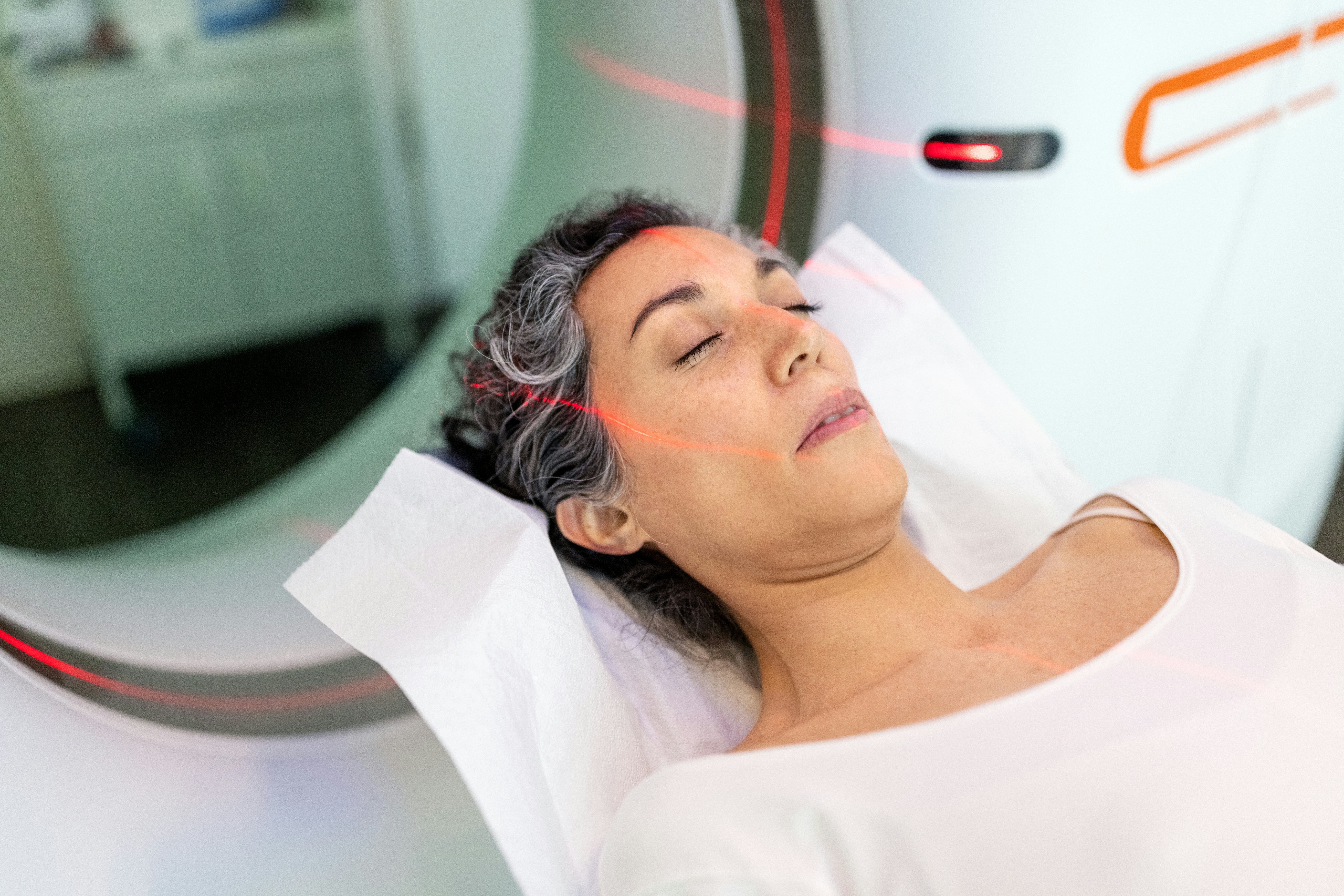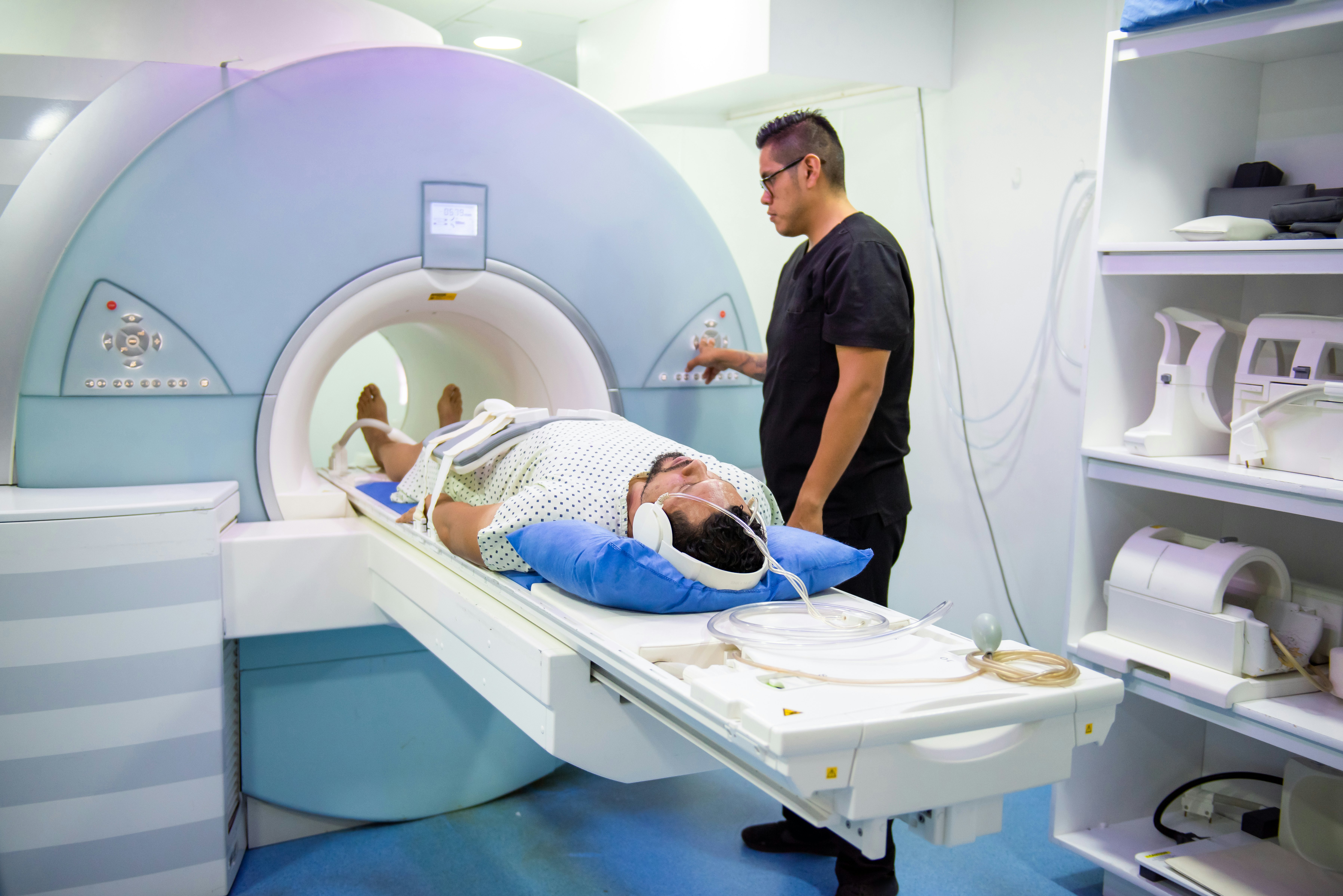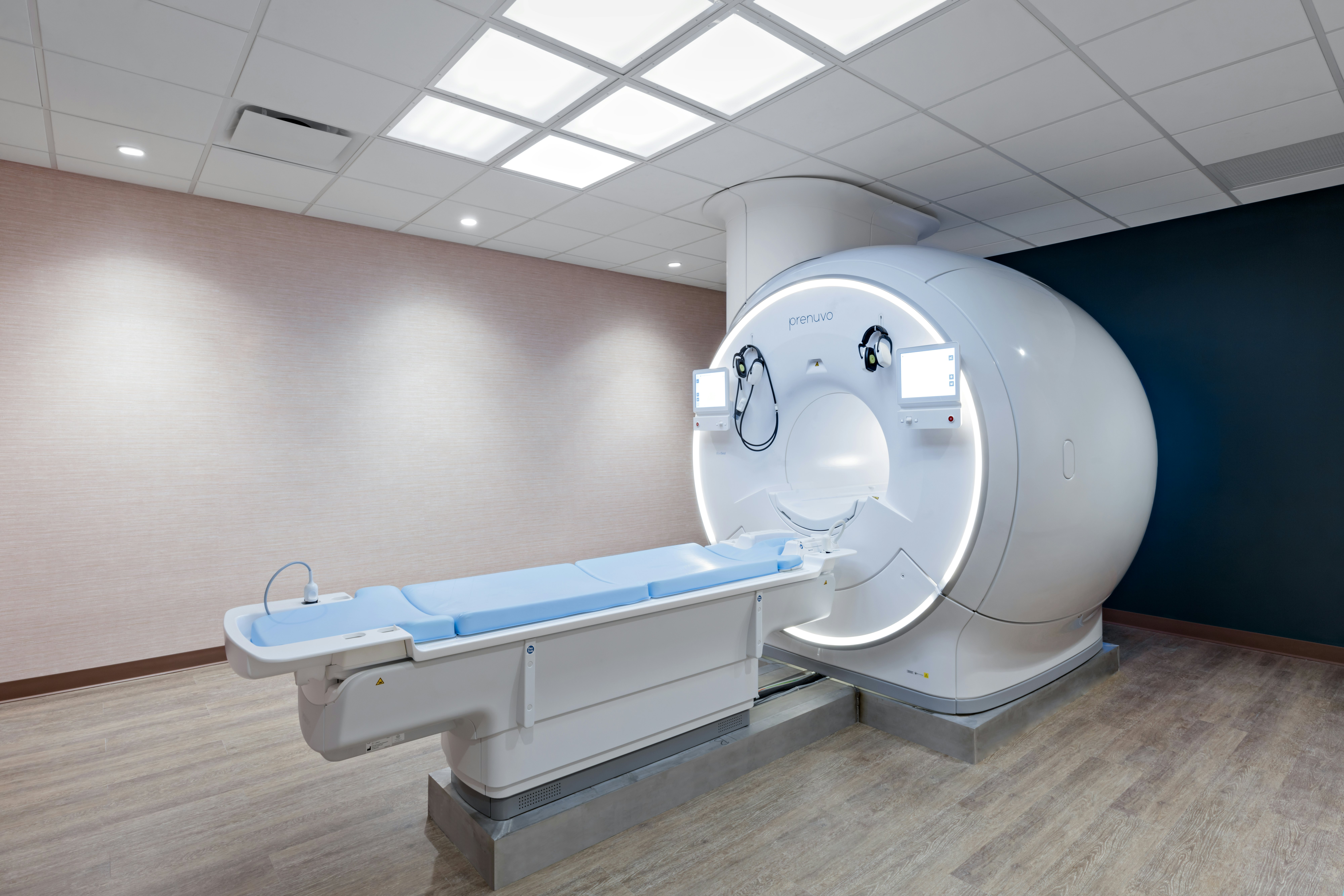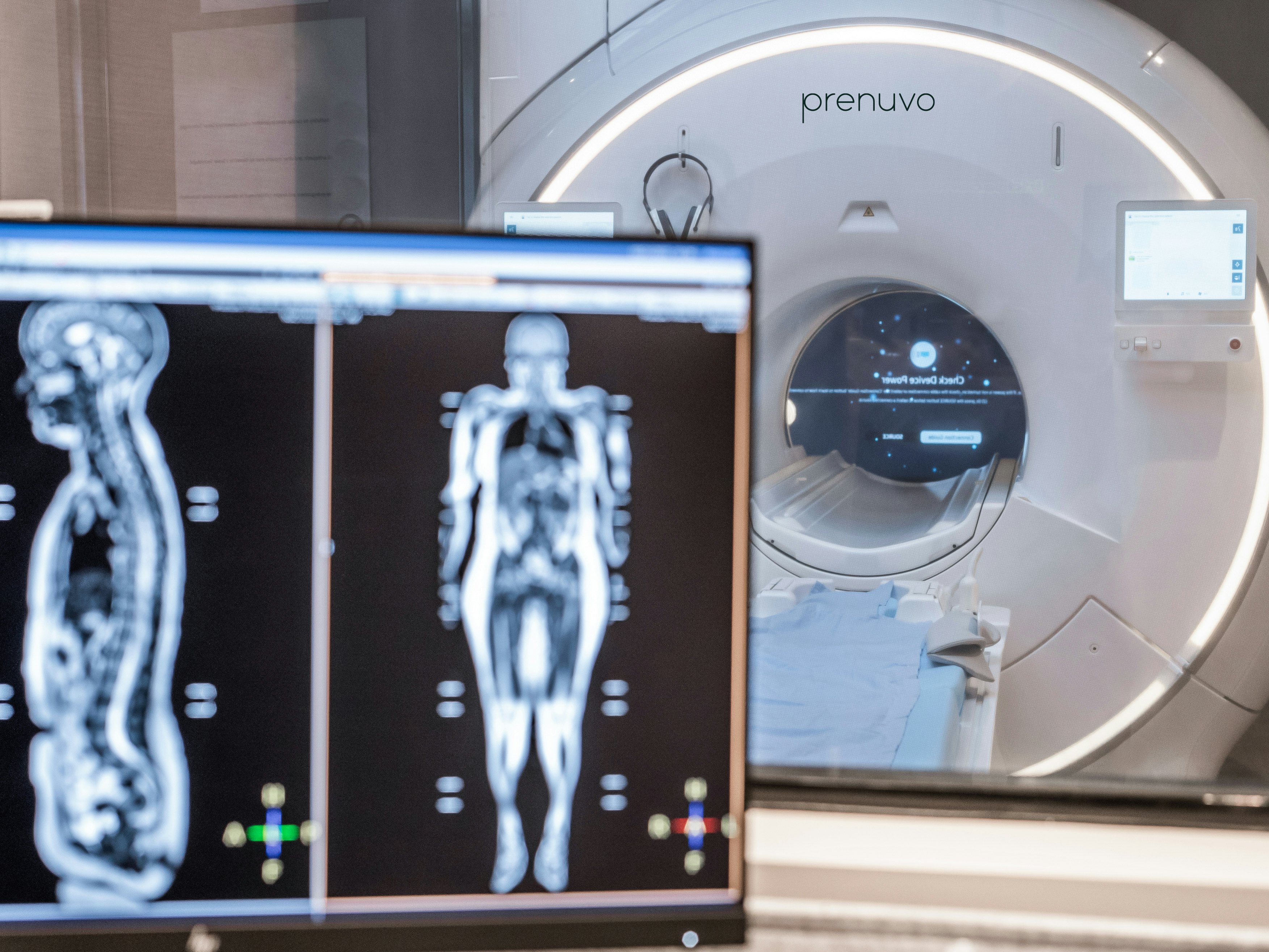
Is worrying about your health keeping you up at night? Well, for the low cost of a couple of grand, you can achieve peace of mind with a full-body MRI scan.
It’s the latest healthcare trend taking the rich and famous by storm and setting a precedent for companies marketing full-body MRIs as a proactive health tool with a simple goal: to detect and catch the first stirrings of diseases like cancer or brain aneurysms before they strike. Already, companies like California-based Prenuvo have glowing reviews from celebrities like Kim Kardashian and Maria Menounos, and equally enthusiastic financial backing from venture capitalists and tech moguls like 23andMe CEO Anne Wojcicki.
The preventative MRI with a hefty price tag also comes packaged with criticism. Organizations like the American College of Preventative published formal guidance in 2016 recommending against whole-body scans for screening cancer in otherwise healthy individuals. This past April, the American College of Radiology released a statement saying it “does not believe there is sufficient evidence to justify recommending total body screening for patients with no clinical symptoms, risk factors or a family history suggesting underlying disease or serious injury.”
But is there anything actually new about the technology used in whole-body scans? Inverse talked to two medical experts to break down the mystique of a medical imaging technique that’s existed for decades and how using it as a preventative health screen in otherwise healthy people may cause more harm than good.
How do MRIs work?
The whole-body scans offered by companies like Prenuvo use a medical imaging technique called magnetic resonance imaging (or MRI). Compared to other techniques like X-rays and CT scans that use ionizing radiation to generate images, MRIs avoid that by using strong magnets and radio waves, says Brian Choi, professor of medicine and radiology at the George Washington University School of Medicine and Health Sciences.
These forces work together to essentially shift around hydrogen atoms in your body, sending signals varying in strength and timing to the MRI scanner revealing where those atoms are. A computer then mashes the data together to create detailed images of your body’s insides with different body tissues shaded in various hues along a black-and-white spectrum.
The strength of the magnetic field typically comes in two flavors. There are 1.5 Tesla (or 1.5T) MRI scanners using a magnet emitting a magnetic field 30,000 times stronger than Earth’s magnetic field. Then there are 3 Tesla (or 3T) MRI scanners, which are about twice as powerful, providing higher resolution and detailed images and taking snapshots far quicker than a 1.5T MRI scanner.

“There are advantages and disadvantages to 1.5 versus 3T magnets,” says Choi. “Generally, 3T magnets are newer, but that doesn’t necessarily mean automatically the image quality is better. In many cases, for certain applications, it can be. But one of the challenges is that the higher the magnetic field, the smaller the bore of the magnetic field. [For example], if you’re a very large patient, using a 3T magnet may be more of a challenge for identifying than a 1.5T.”
The MRI scanners used by companies like Prenuvo are 1.5T, so the technology isn’t fundamentally different than what’s currently offered in a clinical setting. While Prenuvo states it doesn’t use 3T MRI scanners because they’re not ideal for whole-body scans, its competitor Ezra, another company offering full-body scans, does.
But Tarek Hijaz, associate professor of radiology at Northwestern University Feinberg School of Medicine, tells Inverse there are drawbacks in using a 1.5T MRI scanner in that manner regardless. (He uses both types of MRIs in his department.)
MRIs, he says, are designed for targeted parts of the body like the abdomen, knee, or brain. These machines employ essentially special recipes, called MRI sequences, that use particular radiofrequency pulses and timing to "cook up" images that show different aspects of the body, like its structure, blood flow, or activity.
“For the brain, the MRI sequences we get are not the same ones if you were looking at somebody’s knee, for example,” says Hijaz. “You’re looking at different types of tissue and trying to glean different kinds of information. The types of sequences that are done [will be] different.”
Another issue is resolution. Because MRIs are meant to be targeted, you’re going to run into issues with image quality and what you’re able to detect when you widen the camera lens to the whole body.
“You can think about it in the context of vision. If you’re looking directly at something, you’re seeing all the detail and sharpness of everything right in the middle of your field of view,” says Hijaz. “You can still see stuff out of the periphery, but it’s not as well resolved. It’s sort of a simplistic analogy, but it makes the point.”

Founder and CEO of Prenuvo Andrew Lacy told Inverse in an email that tacked onto the company’s customized 1.5T MRI scanners, it has developed its “own image acquisition protocols” that optimize MRI sequences for whole-body scans. Additionally, Lacy said Prenuvo’s MRIs use a multi-parametric approach, a technique that’s already used in MRIs to add more dimension and depth while imaging, such as seeing how blood flows in a tissue, which may point to the presence of a potential tumor.
As these acquisition protocols are proprietary, it's hard to say for sure how new or revolutionary they are relative to what’s offered in hospitals or other radiology facilities. Hijaz says it still doesn’t change the fact that there are technical challenges to scanning the whole body with MRIs, ones that can impact the medical imaging’s sensitivity and specificity and, ultimately, the final results.
“Incidentalomas”
Even with bundling the best hardware and software, the crux of the issue is whether full-body MRIs have the evidence to back up their value for preventative health screenings. While some studies have found that full-body MRIs can catch early cancers and other health issues in some patients, so far, there hasn’t been enough evidence to justify the practice for asymptomatic individuals. Instead, the evidence has pointed to something else very worrisome: false positives and negatives.
“The downside to whole body imaging is the fact you can end up with false positives,” says Choi of George Washington University. “What that means is that you see something that looks like something abnormal, but it turns out to not be anything at all. We call this an ‘incidentaloma.’”
One 2019 meta-analysis looking at 12 studies involving over 5,000 asymptomatic individuals who underwent full-body scans found that among six studies, 16 percent of people ended up with false positives. Only in one study did researchers see false negatives (where the scan misses an actual abnormality) in about two percent of the study’s participants. In about 32 percent of participants with a detected abnormality, it wasn’t clear whether it would have actually led to disease or death for those folks.
“What do you do if you get a whole-body MRI and it misses a lesion because either the non-specialized expertise of the person interpreting [the images] or because the image quality was not the same as a targeted scan of a particular body part?” says Hijaz. “There are issues potentially there, too.”

For now, if you want to fork over upwards of $2,499 — that’s how much Prenuvo charges for its whole-body scan — know that medical experts don’t recommend it over current guidelines in place for preventative health screenings such as mammograms, pap smears, and bone scans. These screenings have plenty of published data with clinical trials justifying their efficacy and when someone should do them, both Choi and Hijaz note. This data takes into account one’s personal risk of disease based on age, family history, and lifestyle, among other factors.
“When you’re talking about colon or breast cancer detection or heart disease detection, there are better tests to find those kinds of things than whole-body MRIs,” says Choi. “We know, based on scientific literature out already there, who benefits from these [screenings]. For whole-body MRIs, we just don’t know yet whether this is going to be harmful or helpful.”
Hijaz says whole-body scans only create massive stakes for otherwise healthy individuals, lulling them either into a false state of security or overwhelming anxiety over an impending doom that turns out to be nothing but an emotional and financial burden in the long run.
“Right now, there are glaring problems with [full-body MRI scans] from a methodological standpoint and issues with sensitivity and specificity,” he says. “It doesn’t make sense [for] anyone to think about it for more than five minutes.”







